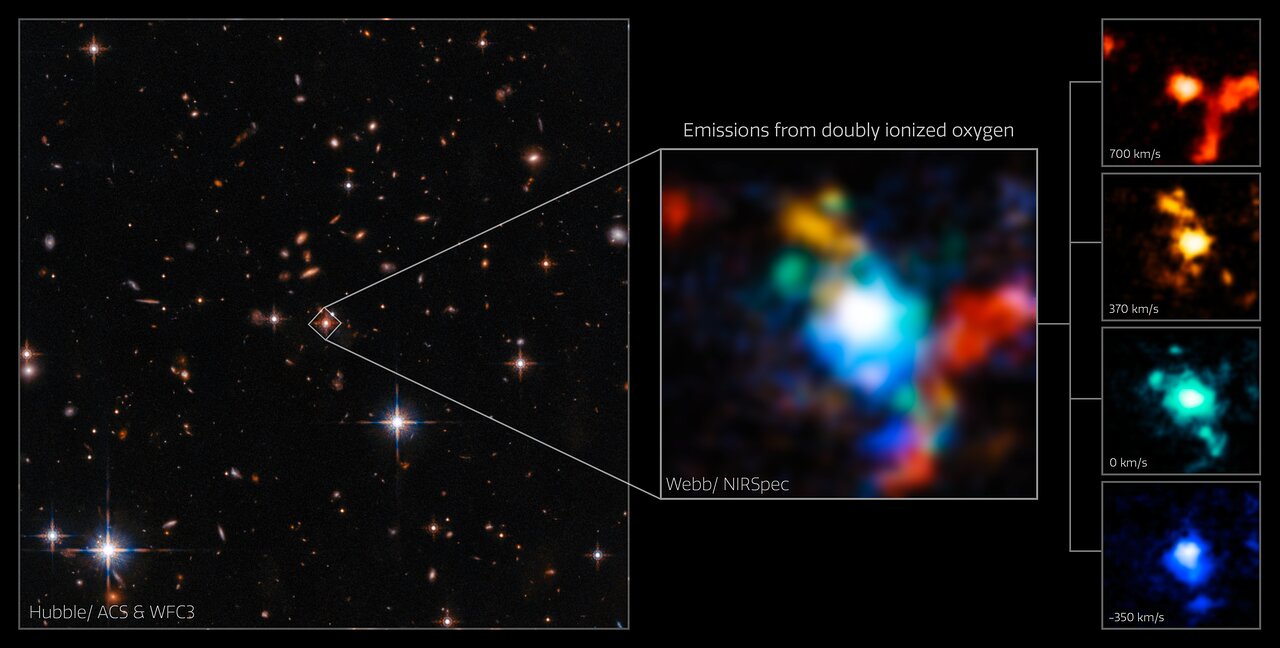The 60-year mystery of ultra-powerful quasars in space has finally been solved
Since their discovery 60 years ago, quasars have often been considered the brightest, most powerful objects in space. Despite decades of studying them, researchers have never understood what caused these bright events. A new study could finally shed light on the mysterious origins of quasars and how they form.
The new study is published in Monthly Notices of the Royal Astronomical Society, and in it researchers detail how quasars form when galaxies collide. This mystery of what triggers the brilliant and iconic energy release of a quasar has been one of space’s biggest conundrums.
So how did researchers discover the origins of quasars? According to the recent paper, researchers used deep imaging observations from the Isaac Newton Telescope in La Palma, to observe distorted structures in the outermost regions of galaxies where quasars reside.
The belief, based on this new research, is that quasars form when galaxies collide with each other. These events occur when the supermassive black holes near the centers of the galaxies collide. Most of the time, this gas orbits beyond the black hole, out of reach.
However, some of these collisions drive the gas toward the black holes. And, just before the black hole can consume the gas, it releases a huge burst of energy and radiation — the origins of the quasars that have baffled scientists for decades.
What is even more impressive about these quasars, though, is that some are so powerful they drive the rest of the gas from the galaxy, leaving it unable to form new stars for billions of years. Some quasars create powerful jets of energy. Notably, this is the first time that researchers have imaged a sample of quasars this size using this high a level of sensitivity.
The research was built off the observations of 48 quasars, as well as observations of their host galaxies and over 100 non-quasar galaxies. The researchers discovered that the galaxies with quasars are more likely to interact or collide with other galaxies out there, helping to explain the origin of these quasar events.
Since their discovery 60 years ago, quasars have often been considered the brightest, most powerful objects in space. Despite decades of studying them, researchers have never understood what caused these bright events. A new study could finally shed light on the mysterious origins of quasars and how they form.
The new study is published in Monthly Notices of the Royal Astronomical Society, and in it researchers detail how quasars form when galaxies collide. This mystery of what triggers the brilliant and iconic energy release of a quasar has been one of space’s biggest conundrums.
So how did researchers discover the origins of quasars? According to the recent paper, researchers used deep imaging observations from the Isaac Newton Telescope in La Palma, to observe distorted structures in the outermost regions of galaxies where quasars reside.

The belief, based on this new research, is that quasars form when galaxies collide with each other. These events occur when the supermassive black holes near the centers of the galaxies collide. Most of the time, this gas orbits beyond the black hole, out of reach.
However, some of these collisions drive the gas toward the black holes. And, just before the black hole can consume the gas, it releases a huge burst of energy and radiation — the origins of the quasars that have baffled scientists for decades.
What is even more impressive about these quasars, though, is that some are so powerful they drive the rest of the gas from the galaxy, leaving it unable to form new stars for billions of years. Some quasars create powerful jets of energy. Notably, this is the first time that researchers have imaged a sample of quasars this size using this high a level of sensitivity.
The research was built off the observations of 48 quasars, as well as observations of their host galaxies and over 100 non-quasar galaxies. The researchers discovered that the galaxies with quasars are more likely to interact or collide with other galaxies out there, helping to explain the origin of these quasar events.
